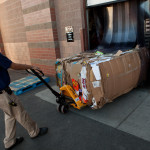Resource scarcity has always been a component of medical care. In the wake of the ongoing COVID-19 pandemic, shortages in supplies, space, and staff have made birth injuries during triage more common.
Emergency rooms and instant-care clinics alike have been turning away anyone suspected of carrying SARS-CoV-2. For expecting mothers, unexpected delays, and space issues impact birth injuries.
Under triage protocols, patients are sent home if they don’t’ meet specific criteria indicating labor is onset or ongoing. This results in multiple dangers to mother and child.
Triage Risks and Process
Short staffing means less persistent monitoring of the health and conditions of women brought to an obstetric unit. When things go wrong in the delivery process, they go wrong quickly.
Shuffling patients around because of the triage process leads to increases in delays and gaps in monitoring. Turning a patient away due to false labor or no available space creates risks for exposing patients and staff alike to viral contamination at multiple locations.
Tests and monitoring of mother and child are conducted to determine severity of need. For mothers this will be rate of contractions (15 minute or less between) or if they have rupturing or cervical anomalies.
For the baby, a fetal heart rate is taken. Above 180 or below 120 indicates struggles for the child.
Once labor has started, it is generally seen as highly dangerous to move a patient. For this reason, transportation needs to be dealt with before labor onset.
Imaging and Teams
Like most things in medicine, a solid relationship between the patient and doctor makes diagnosing issues and avoiding complications easier.
When a mother is shipped to a different hospital and doesn’t have the well-heeled support of a knowledgeable team, they lose vital resources for making decision in the face of complications.
Further, hospitals suffer from communication oversights internally and externally. Imaging, vital to understanding pre-existing conditions related to birth-weight and positioning, either needs to be redone, taking time, or isn’t done, leaving a new staff even further in the dark.
Birth Injury as a Result
Triage protocols remove some recourse from bringing medical malpractice cases against a doctor or hospital. Essentially, the lack of available resources from an ongoing pandemic isn’t actionable. However, the duty a doctor has to a patient is not erased.
A hospital that admits a patient, even when low on resources, has adopted a duty of care. Lacking the right tools (and knowledge) to execute that care is an issue.
Get Representation
If you’ve recently given birth and suffered birth trauma or injury related to triage and shortages, you may have options. It’s terrible to see care mishandled in the face of ongoing issues to the medical field. Even so, the responsibility remains on the hospitals to engage with their processes in good faith.
Get help by contacting us to go over your options and understand the details of your case. We’re here to help.













